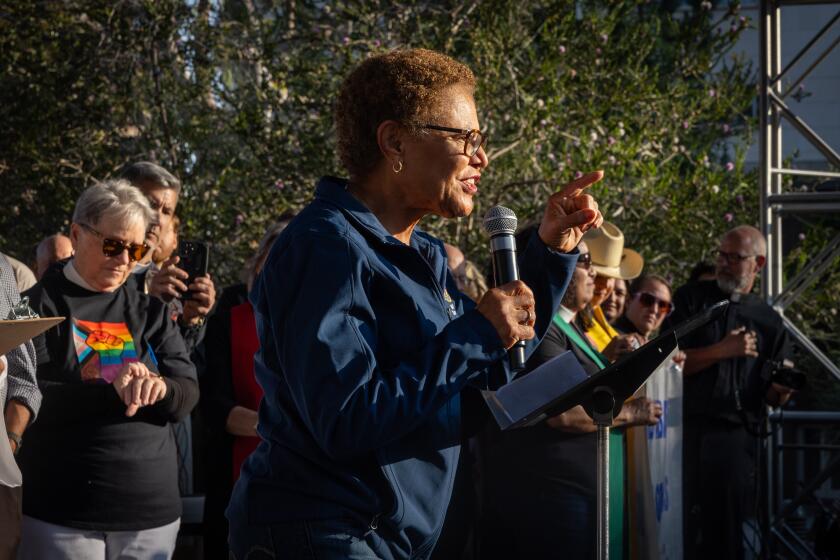State’s Separate Systems for Rich and Poor
- Share via
NEW YORK — If you want to know what’s happening in California schools, just ask the teachers. With a grant from the Rockefeller Foundation, my polling organization recently did just that, surveying 1,070 teachers in the state’s public schools to try to assess the state of public education. What we found was disturbing, if not surprising:
* 32% of California’s 1.6 million public school students do not have books necessary to do their homework.
* 11% do not have enough textbooks to use at school.
* 32% spend many days in classrooms either uncomfortably hot or cold.
* 27% attend schools with cockroaches, mice and rats.
* 17% attend schools where bathrooms are not working or are closed.
Where are these problems most acute? In the 20% of schools with the highest proportion of at-risk students, as judged by such markers as poverty and limited English proficiency. In other words, students with the greatest need are most likely to be in the schools with the biggest problems. California, the teachers’ answers suggest, has two school systems: one for its most privileged students and another, substantially worse, for its least privileged.
Some examples: Only 11% of teachers in the 51% of California schools that ranked lowest on our at-risk index reported serious problems at their schools with teacher turnover. At the 20% of schools deemed most at-risk, 48% of teachers reported teacher-turnover problems. While 13% of teachers in the less at-risk schools reported insufficient textbooks, 25% in the schools most at-risk reported such problems. Substantial discrepancies between the two groups were also reported for such things as working conditions, restroom availability, availability of technology and the number of classrooms staffed with non-credentialed teachers.
We interviewed teachers because they are the best daily witnesses to what is taking place in the classroom. Over the past 25 years, my colleagues and I have conducted more than 40 studies centering on teachers.
In the early 1980s, for the Metropolitan Life Foundation, we examined teacher attitudes toward school-based reform. Common wisdom at the time was that teachers would be the last group to embrace reform. To the contrary, we found that teachers were ready to make personal sacrifices to see the reform agenda adopted in their schools, something they later demonstrated when reforms came.
A few years later, in 1993, we did a national survey funded by the Ford Foundation of 2000 teachers, half of them drawn from a national cross section and half from teachers from inner-city schools. The subject: How ready were teachers to take on the difficult job of teaching in schools populated dominantly by African American, Latino and other low-income ethnic children. We found a high degree of willingness, especially among the 40% who taught in schools where a school-based decision-making reform program was in effect.
In California this spring, we used teachers in a totally new role: as assessors and reporters of what is happening in the classrooms. Our goal was to determine the extent to which all students in a given state had an equal opportunity to obtain a quality education. California was selected for the first survey.
To determine which schools were most at-risk, we looked to the California Board of Education Web site, which provides information on each school in the state. The elements we used in determining at-risk schools were what the percentage was in each school of students receiving free or reduced-price lunches, how many students were classified as “limited English proficient” and how many of the students’ families were enrolled in the Calworks program.
But those statistics alone couldn’t give a full picture of the schools, which is why we turned to the teachers in order to see what was actually happening on the campuses and in the classrooms. Each teacher in the cross section answered an identical questionnaire.
What we found was hardly a portrait of a bright and shining learning environment for the most at-risk and disadvantaged children. To provide them with run-down schools, unqualified teachers and substandard facilities and materials is a sure formula for failure. For California to survive in the long run, it must find a way of making winners out of the current generation of all its young people. This can only be done by properly educating all young people, something that’s simply not being done today in California today.
More to Read
Sign up for Essential California
The most important California stories and recommendations in your inbox every morning.
You may occasionally receive promotional content from the Los Angeles Times.













